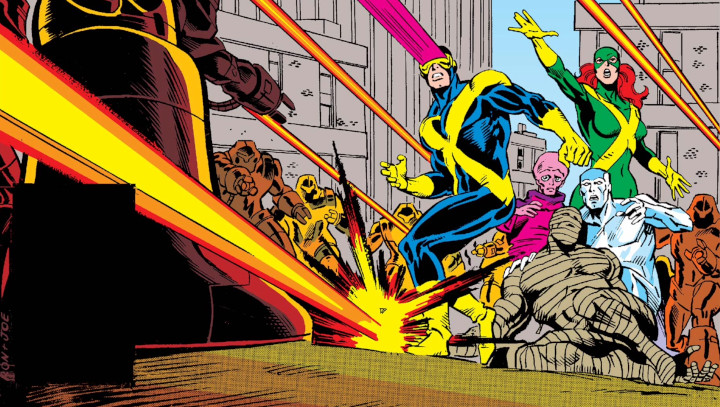
As the popularity of the X-Men continued to skyrocket in the late-1980s, the line of titles kept expanding. New Mutants was the first full series to spin off of X-Men, and in 1986 there would be a second: X-Factor. The elevator pitch was that the original 1963 lineup of the X-Men would reassemble, while the Second Genesis X-Men would continue to be their own team, with the New Mutants as a third, younger team that was still in training.
As a part of my ambitious X-Men reading project, I am dipping my toes into X-Factor, beginning with the X-Factor Epic Collection Volume 1: Genesis & Apocalypse.
What’s collected here?
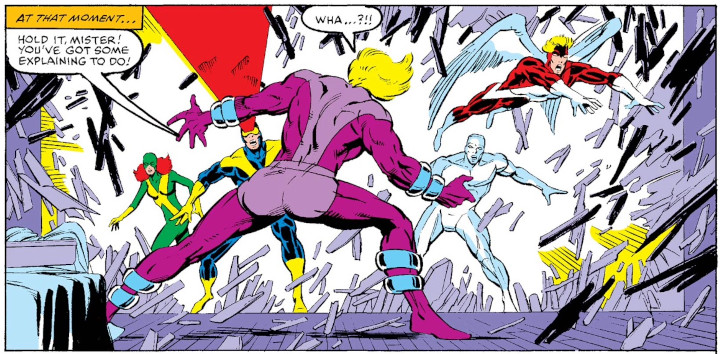
This book contains 456 pages of X-Factor goodness, including The Avengers #263, Fantastic Four #286, X-Factor #1-9, X-Factor Annual #1, Iron Man Annual #8, Amazing Spider-Man #282, and material from X-Men Classic #8 and #43. If you’re wondering how it’s all laid out within the book, the order looks like this:
- The Avengers #263
- Fantastic Four #286
- X-Factor #1-4
- Iron Man Annual #8
- X-Factor Annual #1
- X-Factor #5-7
- Amazing Spider-Man #282
- X-Factor #8-9
- “I Am Phoenix!” (B-story from X-Men Classic #8)
- “Flights of Angels (B-story from X-Men Classic #43)
The X-Men Classic stories are nice additions to this collection, but they’re not completely necessary. If you want to know more about X-Men Classic, I wrote a pretty detailed review on the omnibus.
There’s also a pretty robust amount of creator interviews in the back of the book, as well as a few cover variants and some of John Byrne’s alternative pages to the Fantastic Four story. Apparently, Marvel made some changes to the story, which meant Byrne had to redraw several pages. So you’ll get to see some of the pre-change pages, which are always fun to look at.
How is the quality of the physical book?
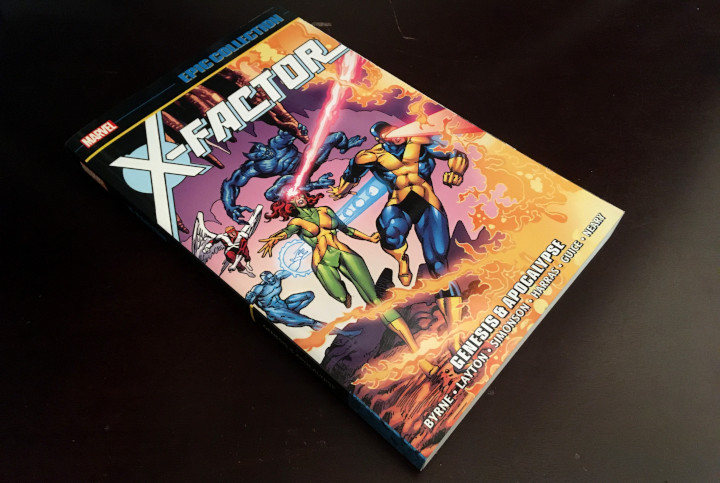
Now, the Epic Collection line has its dedicated fan base, and I can see why, to some extent. The quality of these books isn’t the highest, and the pages lack the smoothness you’d find in an omnibus. That’s not a bad thing necessarily, as these pages feel at least somewhat authentic to the old comic books from the 1980s, which makes these collections feel kind of nostalgic. And when you’re reprinting comics from the 1980s, it’s definitely important to consider the factor that nostalgia plays in all this.
One thing I personally like about the Epic Collection books is that I feel comfortable chucking them into a backpack and wandering around town with these books in tow. That’s a much more difficult prospect for the omnibus line, which is what I typically collect. Not only are omnibus books prohibitively heavy, but they also feel like collector’s items. I get sad if I damage any of my hardcover books in even small ways, but I don’t feel too bad if my Epic Collections get a bit dinged up. Maybe this is heresy to Epic Collection fans, but I do take much better care of my omnis.
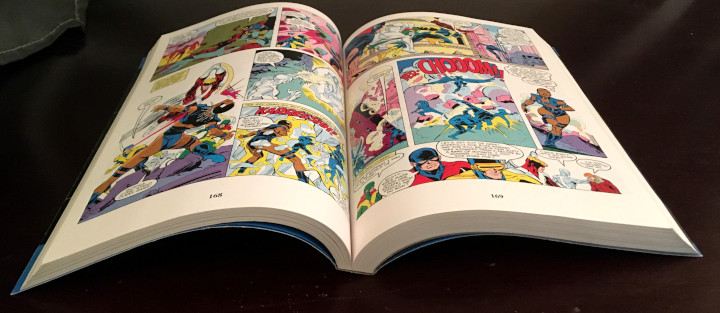
I’ll point out that the Epic Collection line does reprint stories in full-color, unlike the Essential Collections (which are printed in black and white). As you can see in the image above, the color is intact here, and I think it looks pretty good. And while the paper quality isn’t amazing, the image bleedthrough isn’t bad at all. In fact, I have omnibuses that have worse bleedthrough than this, so I really can’t complain about the paper quality here.
The front cover of the book re-uses the cover from X-Factor #1, which I honestly don’t care for much. To be more specific, it’s just the recolor that’s used for the book cover that I don’t like; the actual cover from issue #1 is fine. The recolor just looks super generic to me, but I can’t put my finger on exactly why. What makes this weirder is that there’s an unused cover showcased in the latter portion of this book that’s way, way cooler than the real #1 cover. I don’t know why they didn’t use that for the cover of issue #1 — or, if not that, then for the cover for this Epic Collection.
The back of the book shows a recolored version of the cover of X-Factor #6, which I think is a much better cover than #1, and the purple color really looks great on it (the original is orange).
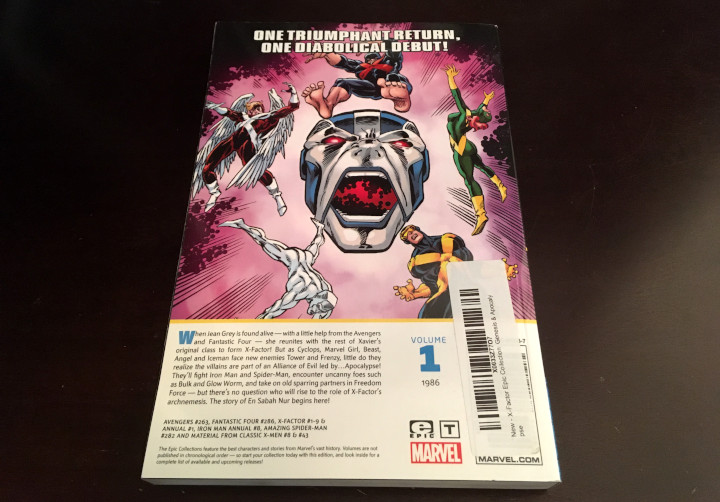
I’ll also point out that I hate it when stores put big stickers on the backs of these books, because there’s no real way to get them off without either leaving a big sticky splotch on the book or scratching up the cover. If you’ve figured out a way to get rid of stickers like this without damaging the book, please let me know about it in the comments section. I’ve tried basically everything at this point (even the dish soap trick).
So yeah, this is a softcover book that collects more than 400 pages of essential X-Factor reading, and as far as I know, this is the best way to read these stories. It’s hard to say if Marvel will ever make an omnibus to collect this early X-Factor material, but they do seem reluctant to release X-Factor omnis that don’t have Peter David’s name on the cover (Peter David wrote issue #55 and then a short run starting with issue #70, and this material is collected in an omnibus, which I’ll try to review eventually). Since X-Factor issues #9-40 are collected in X-Men omnibuses (Mutant Massacre, Fall of the Mutants, Inferno Prologue, and Inferno), I’m not holding my breath for an early X-Factor omni. With that in mind, this Epic Collection is a great way to read these stories as a gap-filler before jumping into the Mutant Massacre.
Are the stories any good?

First up, I should preface this with a spoiler alert. I’m going to talk about plot points in the following paragraphs, and if you’ve never read 1980s X-Men, there are some pretty big spoilers. But it’s essential to talk about those, I think, because X-Factor begins with a major retcon (a retcon that Chris Claremont was not happy with — don’t click the link if you don’t want to know what the retcon is!)
Okay, so with that out of the way, let’s talk about the story of X-Factor.
As I mentioned in the intro, the idea behind this series was to reunite the original five X-Men from the 1963 lineup: Cyclops, Beast, Iceman, Angel, and Jean Gray. There was one problem, of course: Jean Grey had been famously and controversially killed off at the end of the Dark Phoenix Saga.
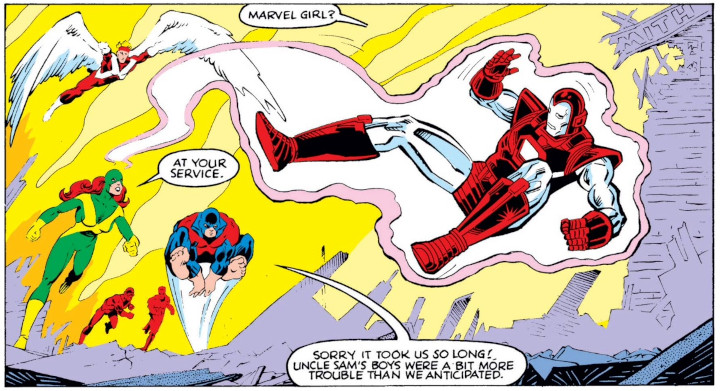
So the team at Marvel had to figure out a way to bring Jean back to life. And they actually pull it off in a way that feels somewhat believable. I won’t get into the details, because the early issues of this series are going to lay it out thoroughly and repeatedly. But Jean’s recovery is covered in The Avengers #263 and Fantastic Four #286, which are the first two issues collected in this book.
Once Jean is back, the real X-Factor story begins. The title of the first issue is “Third Genesis,” which is a play on “Second Genesis,” the story that showed the formation of an all-new team of X-Men (you can read more about that in my full review of the Uncanny X-Men Vol. 1 omnibus).
The original five X-Men are putting together a new team called X-Factor. They’re disguising themselves as a Mutant investigation operation, playing into the Mutant-phobia that’s running rampant at this point in the X-universe. They advertise themselves as a team that investigates Mutant sightings, using this as a cover to rescue Mutants who might be in trouble.
This does lead to some ridiculousness, when the characters have to don their X-Factor uniforms to get onto the scene, then change into their X-Men attire to clobber anyone who needs clobberin’, then change back into their X-Factor uniforms to collect their payment. And the more they’re seen out in public, the more obvious it is that the original X-Men are indeed X-Factor, which becomes something of a problem in the later portion of this book. And what becomes an even bigger problem is that people think of X-Factor as Mutant exterminators, so they kind of build this reputation among “Mutie-haters.”
Oh, and Beast gets reverted back to his human form, just like he was in the 1960s. If you love the blue, furry version of Beast, you might be a little disappointed in this, but if you’re more familiar with the original teenage version of Hank, then you’ll definitely appreciate seeing him in human form again. And Vera’s back too, though she’s gone from her librarian look to more of a new wave look, with a partially shaven head and an exposed midriff.
The early issues of X-Factor are written by Bob Layton, and they have a little bit of the flavor of the 1960s version of the comic book. I’m guessing this was intentional, as the whole point of this book is to play to nostalgia for the goofier, lighter-hearted 1960s X-Men comics.
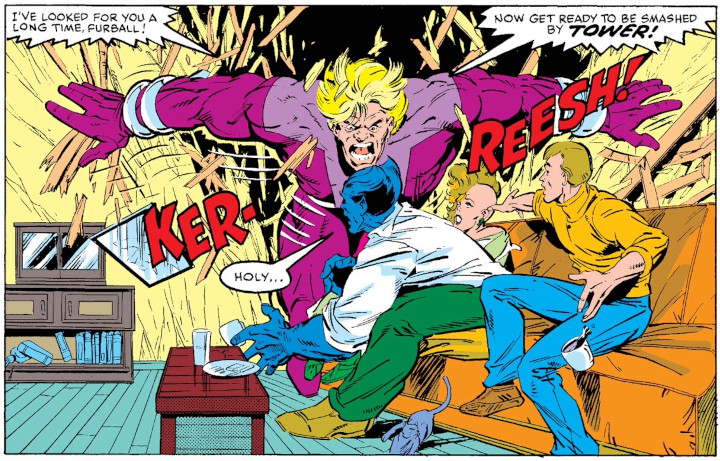
But there’s also a poignancy to these issues, mostly due to the drama caused by Jean Grey’s return. Obviously, Scott Summers (who was happily married and had a baby back in Alaska) has a tough time coping with the return of his lover, who had been thought dead for years. And Jean struggles to make sense of this strange “modern” world, where Mutants are hated, Xavier is gone, and Magneto is leading the X-Men. I actually think these stories manage to strike a perfect balance between the nostalgic corniness of the 1960s with the emotional heft of the 1980s X-Men character arcs.
After the first five issues (well, five issues and an annual), Louise Simonson picks up the book starting with issue #6. This happens right after Apocalypse is introduced. I probably don’t need to point out that he’s going to be pretty important later on, but it’s neat seeing the earliest version of the character. I should point out that he doesn’t have a very big role in this collection. He shows up at the very end of issue #5 and throughout issue #6, but it’s clear that those in the Marvel bullpen hadn’t quite figured out what to do with the character at this point in history.
There’s an issue of The Amazing Spider-Man toward the end of this collection, and I’d actually say you could probably skip it if you’re just interested in the character drama between Scott and Jean (the issue before this one ends on a particularly spicy note). In Amazing Spider-Man #282, J. Jonah Jameson hires X-Factor to capture Spider-Man, but they eventually have to turn him down because Spider-Man isn’t actually a Mutant.
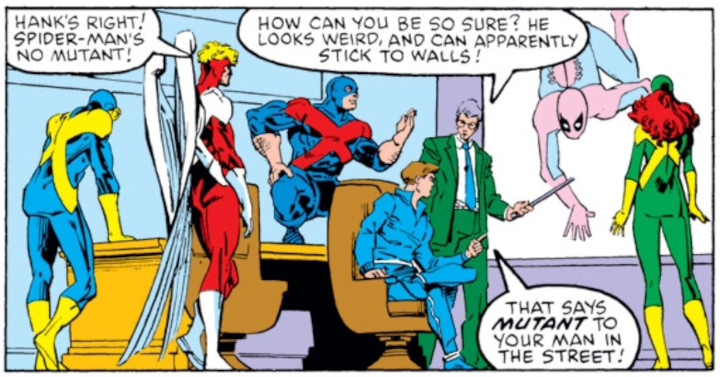
And then the final two issues are leading directly into Mutant Massacre, where the general populace’s Mutant resentment boils over.
This collection ends with issue #9, not because that’s a good place to end story-wise, but because Walt Simonson takes over as the artists starting with issue #10, so whenever Marvel gets around to releasing the next Epic Collection, it will begin with Walt’s first issue. So if you just pick up this collection alone, don’t expect it to build to a satisfying conclusion; it’s actually building into Mutant Massacre, which is collected elsewhere.
Personally, I really enjoyed reading most of this material. I think the drama between Jean and Scott doesn’t come to the satisfying conclusion you might hope for, but again, that definitely feels like it’s an intentional throwback to the 1960s stories, where Scott and Jean just plain suck at communicating with each others.
I also really like the character of Arthur Maddicks, who is introduced in this run.
So yeah, this is a pretty good read. No, it doesn’t compare to the stuff Chris Claremont was doing at around the same time, but it walks a really delicate balance between the silliness of the older stories and the darker — and downright brutal, in many cases — emotional arcs that define the 1980s era of X-Men. If you have any appreciation for the 1960s version of X-Men, this is definitely worth reading, and even if you don’t, I think this run is a lot more palatable for modern readers than most of the 1960s material.
Is this a good place to start reading X-Factor?
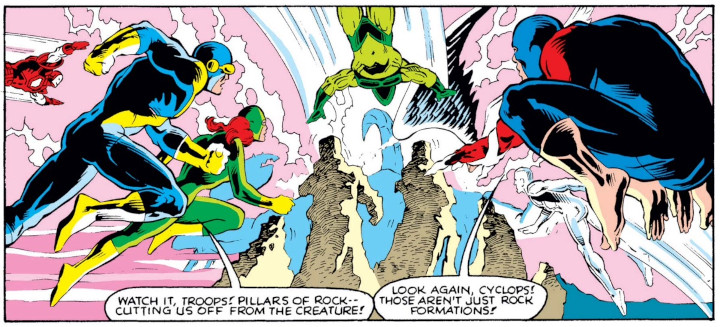
If all you care about is X-Factor, then this is a reasonable place to start reading. However, this series builds off of the previous ten years of X-Men comics, meaning that it’s a slightly awkward place to jump in. Honestly, I think you’d probably be fine if you read the material in the X-Men: Dark Phoenix Saga omnibus and the Uncanny X-Men Vol. 3 omnibus. This will get you caught up on what happened to Jean Grey, introduce you to Madelyne Pryor, and show you some of the building resentment toward Mutantkind. Obviously, you’ll still be missing some things, but I think you’ll be up to speed on most the essentials.
Plus, this really is designed to pay homage to the 1960s era of X-Men. You don’t need to read all of that material to orient yourself (and most of it isn’t great anyway), but I do think people who’ve read this decade of X-Men will be in a better place to really get what’s going on here. The vibes, man…
What’s next?
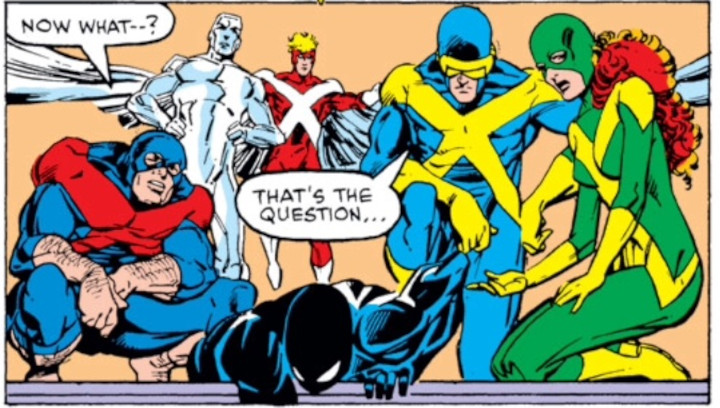
After this, the adventures of X-Factor continue in the pages of the Mutant Massacre omnibus, which collects X-Factor issues #9-17. Yes, issue #9 is a double-dip.